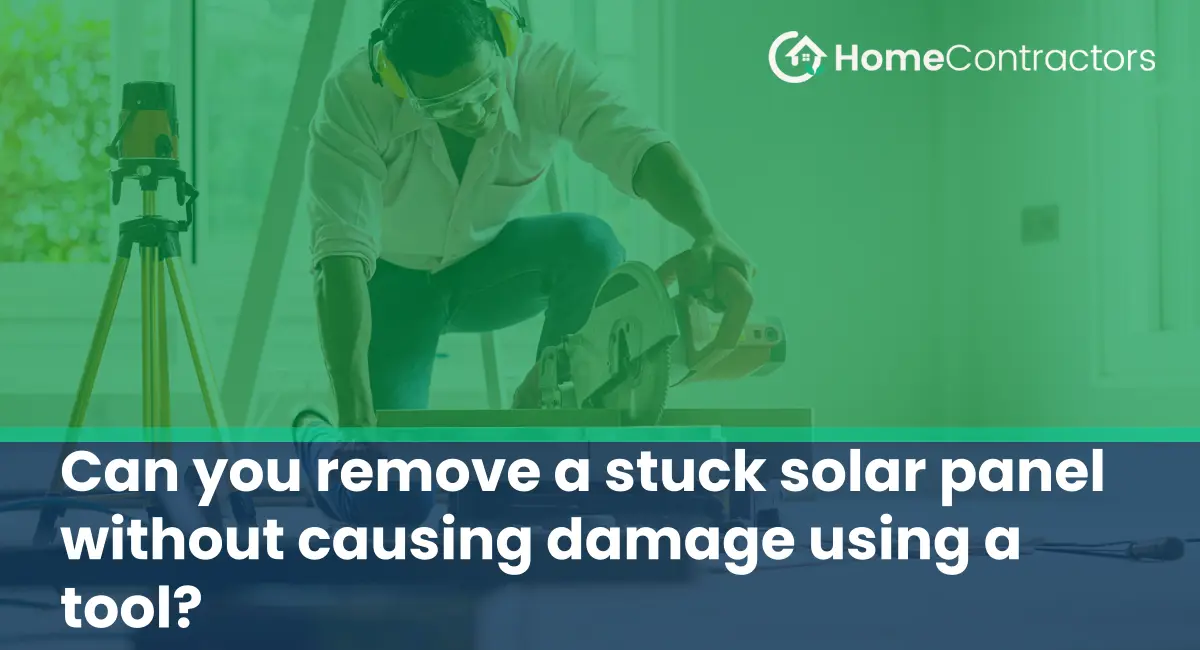Solar panels are an efficient and popular source of renewable energy. They help reduce electricity bills, decrease carbon footprint, and contribute to a sustainable future. However, like any other piece of equipment, solar panels may sometimes encounter issues, such as becoming stuck or jammed. If you find yourself in a situation where you need to remove a stuck solar panel, it is crucial to handle it with care to avoid causing any damage. Fortunately, there are several tools and techniques that can be employed to safely remove a stuck solar panel without causing harm.
Understanding the Issue
Before attempting to remove a stuck solar panel, it is important to assess the situation and understand why it is stuck. Several factors may contribute to a solar panel becoming jammed, such as a broken mounting system, damage to the frame or connectors, or debris built up around the panel. By evaluating the situation, you can better determine the appropriate course of action and avoid exacerbating the problem.
Assessing the Damage
Upon identifying a stuck solar panel, it is necessary to assess any visible damage before proceeding with any removal attempts. Inspect the mounting system, frame, connectors, and wiring to look for any signs of breakage or damage. If you notice any issues, it is advisable to contact a professional for assistance, as it may require specialized knowledge and tools to fix.
Gather the Right Tools
To remove a stuck solar panel without causing damage, you will need to gather a few essential tools. Some of the equipment you may require includes a screwdriver or drill with the appropriate bits, a pry bar, a soft mallet or rubber hammer, a silicone lubricant, and safety goggles or gloves. Ensuring you have the necessary tools beforehand will enable you to work efficiently and safely.
Taking Precautions
Before attempting to remove a stuck solar panel, it is crucial to take certain precautions to prevent any accidents or injuries. First and foremost, ensure that the solar panels are not connected to any power source. This is to avoid electric shocks or damage to the electrical components. Additionally, using gloves and safety goggles is highly recommended to protect yourself from any sharp edges or debris that may be encountered during the removal process.
Loosening the Solar Panel
Once you have assessed the damage, gathered the necessary tools, and taken the required precautions, it is time to attempt to remove the stuck solar panel. Follow these steps to safely and effectively loosen the panel:
- Disconnect the panel: Start by disconnecting any wiring or connectors to ensure the panel is completely isolated.
- Lubricate the mounting system: Apply a silicone lubricant to the mounting system to help loosen any corroded parts or debris.
- Pry the panel: Use a pry bar or a screwdriver with an appropriate bit to gently pry the panel away from the mounting system. Apply even pressure and be cautious not to put excessive force to avoid damaging the panel or the mounting structure.
- Tap with a mallet or hammer: If the panel remains stuck, tap the edges lightly with a soft mallet or a rubber hammer. This can help dislodge any stuck parts or loosen debris.
Seeking Professional Assistance
In the event that the stuck solar panel cannot be removed safely using the aforementioned techniques, it is important to seek professional assistance. Trying to force the panel may cause further damage or pose a risk to your safety. Professional solar panel technicians have the expertise and specialized tools to handle such situations, ensuring the safe removal of the panel without causing harm.
It is possible to remove a stuck solar panel without causing damage using the right tools and techniques. By assessing the damage, gathering the appropriate tools, taking sufficient precautions, and attempting to safely loosen the panel, you can resolve the issue without further complications. Remember, if the problem persists or if you are unsure about how to proceed, consulting a professional is always the best course of action to ensure both your safety and the integrity of your solar panel system.
